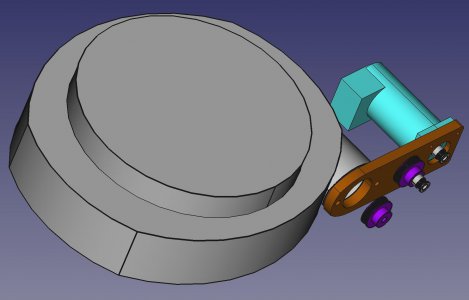- Joined
- Dec 3, 2014
- Messages
- 497
nice skills to have.
now i'm more keen to see what you do
now i'm more keen to see what you do
Thanks!nice skills to have.
now i'm more keen to see what you do
ah I did not know chuck passed away. He helped me more than a few timesMy coding skills weren't (and still aren't) good enough to do it from scratch so I tried the Chuck Fellows (RIP) version. Unfortunately I had trouble getting consistent results with it- skipping steps and other erratic behavior. Obviously not OK when you are cutting gears. So I dumped it and went to the "dummies" version which worked flawlessly. Better interface too. Couple small code errors (keypad connector pinout) but nothing major.
I suspect there was something flaky about Chuck's pushbutton servicing routine but I never could pin it down. Poor guy passed away before I could contact him...
-M

Software debounce on the keypad? With the combination of using 4x4 scanning plus software debounce that can get pretty messy.My coding skills weren't (and still aren't) good enough to do it from scratch so I tried the Chuck Fellows (RIP) version. Unfortunately I had trouble getting consistent results with it- skipping steps and other erratic behavior. Obviously not OK when you are cutting gears. So I dumped it and went to the "dummies" version which worked flawlessly. Better interface too. Couple small code errors (keypad connector pinout) but nothing major.
I suspect there was something flaky about Chuck's pushbutton servicing routine but I never could pin it down. Poor guy passed away before I could contact him...
-M
I better double check mine tomorrow. I’m thinking the bottom of the table looks like more than 40 teeth. Unless it is a multi-start leadscrew/worm, that would mean it isn’t 40:1. For the servo rpm, with 90 to 1 I’d ditch the intermediate pulleys and live with 3:1 there.Unfortunately most tables are either 72 or 90 to 1
